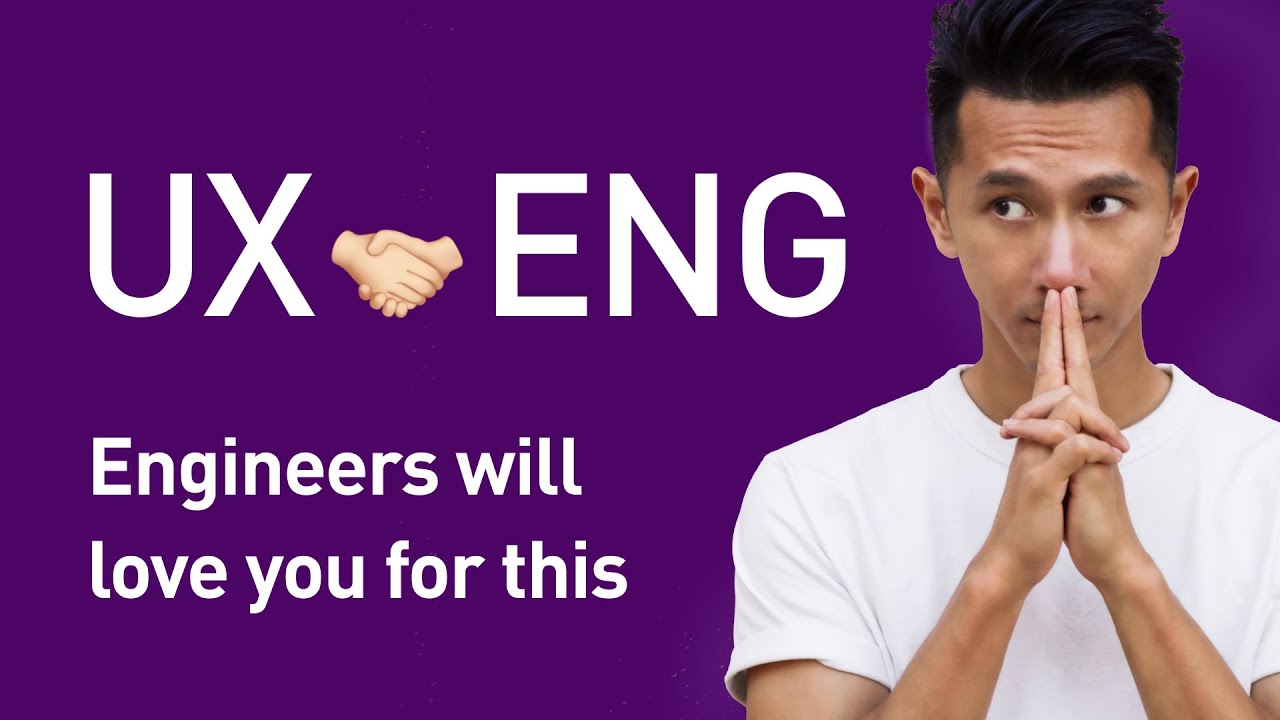Zeus Learning Instructional Designer/UX Designer Interview Experience ft. Anish Patil
Summary
TLDRIn the COD podcast, Anish Patil, a UX designer at Zeus Learning, shares insights on the recruitment process for UX designers, which includes an aptitude test, HR and technical interviews, and a focus on design logic and portfolio presentation. He advises aspiring designers to avoid crash courses and instead practice and learn from mistakes, recommending Google's UX design course as a starting point. Patil emphasizes the importance of understanding design principles and having a strong case study project to demonstrate design thinking.
Takeaways
- 🎓 Anish Patil is an electronics engineer turned UX/instructional designer at Zeus Learning.
- 📝 The recruitment process for UX designers at Zeus Learning consists of three rounds: an aptitude test, a technical/HR interview, and a final technical interview.
- 🧠 The aptitude test includes a mix of short and long-form questions covering logical reasoning, verbal ability, and image/product analysis.
- 💡 Candidates are expected to demonstrate their thought process and reasoning behind their aptitude test answers during the HR/technical interview.
- 📑 A strong design portfolio and case study showcasing design logic are crucial for UX role applicants.
- 🛠 For aspiring designers, Anish recommends starting with Google's UX design course and then replicating existing designs to build confidence.
- 🎨 It's important for designers to master at least one design tool like Figma, Photoshop, or XD to improve efficiency and expertise.
- 🚫 Avoid short crash courses and focus on consistent practice and learning from mistakes to become a better designer.
- 🔍 A logical mindset and understanding of UX principles are more important for a UX role than a design degree.
- 📈 Having a well-thought-out case study and side projects that demonstrate UI abilities can significantly enhance a candidate's portfolio.
- 💼 For freshers, it's beneficial to have a main project that is a case study ready to be presented during interviews.
Q & A
How many rounds are there in the recruitment process for a User Experience Designer at Zeus Learning?
-There are three rounds in the recruitment process for a User Experience Designer at Zeus Learning: an aptitude test, a technical or HR interview, and a final technical interview.
What types of questions can candidates expect in the aptitude test round for a UX Designer role at Zeus Learning?
-Candidates can expect a mix of short and long-form questions that may include con-based, aptitude, logic-based, and verbal ability questions. They might also encounter quiz-based questions and product or image-based questions where they need to identify issues or suggest features.
What is the focus of the second round of interviews for a UX Designer at Zeus Learning?
-The second round is a mix of technical and HR questions. It focuses on the candidate's responses from the aptitude test, their thought process behind those responses, and may also involve presenting a design portfolio.
How important is it for a candidate to have a design portfolio when applying for a UX Designer role at Zeus Learning?
-Having a design portfolio is crucial as it allows candidates to showcase their design thinking and capabilities. It should include a well-thought-out case study and may also feature side projects demonstrating UI abilities.
What advice does Anish Patil give for aspiring engineers or designers preparing for UX roles?
-Anish Patil suggests that aspiring engineers or designers should have a strong understanding of design principles and laws, and should be prepared with a good case study project and some UI projects. He also recommends starting with existing projects to gain confidence before creating projects from scratch.
What resources does Anish Patil recommend for someone starting their UX journey?
-Anish Patil recommends the Google course on UX design as a starting point, which provides necessary resources for beginners. He also suggests replicating existing projects found on Behance or Dribbble to gain practical experience.
How does Anish Patil view the importance of design tools for a UX Designer?
-Anish Patil emphasizes the importance of having expertise in at least one design tool, such as Figma, Photoshop, or XD, as it can significantly improve efficiency and quality of work.
What mistake does Anish Patil advise aspiring designers to avoid?
-Anish Patil advises against falling for quick crash courses that promise to make one a designer in a short period. Instead, he suggests continuous practice, learning from mistakes, and not repeating them.
What is the one thing Anish Patil thinks is crucial for a UX role regardless of whether one is from an engineering or design school?
-Anish Patil believes that having a strong logical foundation and understanding of UX principles is crucial for a UX role, regardless of one's educational background.
How does Anish Patil suggest improving design skills?
-Anish Patil suggests improving design skills by studying interesting designs or products, trying to replicate them, and then adding one's own touch to understand the design process deeply.
Outlines

This section is available to paid users only. Please upgrade to access this part.
Upgrade NowMindmap

This section is available to paid users only. Please upgrade to access this part.
Upgrade NowKeywords

This section is available to paid users only. Please upgrade to access this part.
Upgrade NowHighlights

This section is available to paid users only. Please upgrade to access this part.
Upgrade NowTranscripts

This section is available to paid users only. Please upgrade to access this part.
Upgrade NowBrowse More Related Video

6 Tips Cara Menjadi UI/UX Designer

How I'd learn UX Design (if I could start over)

Web Dev vs Web Design Explained with Rus Anderson

How To Become A UI/UX Designer In 2024 Without A Degree 📈 | Saptarshi Prakash

How to Get Into UX in Games in 2026

How UX Designers Work with Engineers? (Productivity + UX Interview Tips 2021)
5.0 / 5 (0 votes)